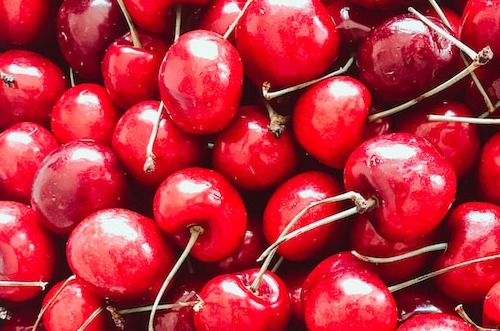
In W22 in the cherry landscape, the organoleptic characteristics of the cherries, especially Italian cherries, which suffer from the effects of rain and the absence of sun exposure, are still not optimal. Italian cherry prices are falling due to a demand that does not take off, while waiting for the climate to improve, a factor that has repercussions on the quality of the cherries. In the months of May and June, the humid and rainy climatic conditions may lead to the development of numerous cases of cylindrosporiosis on cherry trees. The disease is common in all areas where cherry trees are grown. Sour cherries (Prunus cerasus) are generally more susceptible to the disease than sweet ones (Prunus avium). The fungus mainly attacks the leaves but is also capable of causing lesions on petioles and fruits. Early attacks of the disease can lead to fruit not reaching full maturity. Also, if the early defoliation is repeated over the years, it can lead to the formation of smaller-sized cherry fruits, the weakening and death of fruiting buds, and stunted plant growth. The chemical defense can begin about three weeks after the end of flowering and continue if the climatic conditions are particularly humid and rainy every 7-10 days. In cases of serious infections, it would be advisable to carry out even two treatments after harvesting. After the rains in the Valle del Jerte area, one of the main cherry-producing areas of Spain, it is expected that cherry production losses could exceed 20 thousand mt in 2023. For Spanish cherry growers, this is a catastrophe as only 20% of cherries have been harvested, which has forced a premature end to the campaign for most of them.
In Turkey, an average of 160 thousand mt of cherries are produced annually in an area of 21 thousand ha in the Şehzadeler district of Manisa and the Kemalpaşa district of İzmir, which are the earliest cherry growing regions, and a significant part of this is exported. According to the Aegean Exporters' Association data, in the 3-week period when cherry exports started, Turkish cherry exports were valued at USD 5.354 million, up 174% compared to the same period in 2022. During the period, Turkish shipments were destined for 39 countries, especially to the EU and Russia. Due to adverse weather conditions in Kemalpasa in the İzmir province of Turkey, 80% of early sweet cherry trees were damaged. There are 3 million cherry trees in an area of 8.6 thousand ha in İzmir's Kemalpasa district. The early cherries, which were planned to be harvested in W1 of May, cracked due to adverse weather conditions and caught a fungal disease. Farmers moved on and started to harvest the Salihli and Napoleon varieties which ripened about 10 days after the early cherries. Around 800 thousand mt of sweet cherries are produced annually in Turkey, with the city of İzmir responsible for around 90 thousand mt of that production. The sweet cherry production in İzmir mainly takes place in the Kemalpasa district where the annual production volume is approximately around 60 thousand mt.
Despite the cold and protracted spring, the season for selling sweet cherries in Ukraine started without delay. Experts indicate that the first wholesale batches of Ukrainian early sweet cherries have already appeared on the market. To date, sweet cherries are sold exclusively in small wholesale at prices of USD 1.64-2.32/kg, which corresponds to the prices registered at the beginning of the 2022 season. However, Ukrainian cherry farmers are concerned about heavy rainfall, which is now observed in most regions of the country, and can adversely affect the quality of the berry. At the same time, experts report that in the 2023 season, the weather had already presented unpleasant surprises to Ukrainian farmers in the form of frosts in April and May, resulting in expectation of less cherry production than in 2022. Lastly, in W22, domestic early sweet cherries (Early Lory, Early Red, Early Sweet, Rita, Vera varieties) appeared on the markets of Chisinau and the southern cities of Moldova. Traders indicate that the products are sold only in microscopic wholesale and retail, traded at USD 3.37-5.61/kg. Visually, the Moldovan cherry fruits are almost identical to Spanish and Greek products, which are noticeably larger than the obviously domestic farmed cherries. In less than three weeks, cherries, mostly imported, have fallen in retail prices by about 3 times. Market traders believe that the process of price reduction will continue, as mass harvesting of early cherries will begin in the southern regions of Moldova from the middle of W23. However, in W21, hail fell in most regions of Moldova, affecting cherry orchards slightly since this crop has a large leaf mass covering the fruits. Despite that, there may be some loss in the quality of Moldovan cherries. For this reason, and also due to the fact that the early Moldavian sweet cherry is sold only in a poor domestic market, the price of the product is unlikely to be high.






